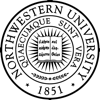About Us
- Jeff Snyder's group in Materials Science studies the electrical and thermal transport of materials. Most of the work is inspired by the sustainable engineering applications of Thermoelectrics. The materials research focuses on fundamental science related to Thermoelectrics with emphasis in Solid State Physics, Chemistry and Materials Science but we also develop expertise in Thermodynamics, high temperature measurement methods and materials processing. Snyder and his thermoelectrics group has worked closely with the NASA's Thermoelectrics group at the Jet Propulsion Lab in Pasadena CA which has specialized processing and testing capabilities for the development of thermoelectric materials into devices. With this institutional expertise spanning nearly 50 years, we team with companies interested in commercializing thermoelectrics for power generation waste heat and novel Peltier cooling applications.
This website is based on the older Thermoelectrics.caltech.edu in use ~ 2002-2015

Group News
 Eleonora Isotta wins ITS Postdoc Award 2024
Eleonora Isotta wins ITS Postdoc Award 2024
For For her work with Thermal Imaging of Grain Boundaries.
 Michael Toriyama wins ITS Graduate Student Award 2024
Michael Toriyama wins ITS Graduate Student Award 2024
Weertman Fellowship 2023
For outstanding achievements as a Graduates Student in MSE at Northwestern.
 Jeff Snyder wins ITS Outstanding Achievement and Humboldt Awards 2024
Jeff Snyder wins ITS Outstanding Achievement and Humboldt Awards 2024
For outstanding contributions in the field of Thermoelectrics.
 Leah Borgsmiller wins Best Presentation Award at MRS Fall 2022
Leah Borgsmiller wins Best Presentation Award at MRS Fall 2022
For her Presentation on Low Thermal Conductivity and Thermoelectric Performance of Zintl Yb₁₀MnSb₉.
 Kazuki Imasato wins 2020 ITS Graudate Student Award
Kazuki Imasato wins 2020 ITS Graudate Student Award
For his work optimizing the new n-type thermoelectric material Mg₃Sb₂ to be competitive with Bi₂Te₃.
 Matthias Agne wins 2019 ITS and Gold MRS Graudate Student Awards
Matthias Agne wins 2019 ITS and Gold MRS Graudate Student Awards
For his work elucidating the thermodynamics of heat capacity and diffuson thermal conductivity in complex materials.
For his work developing the understanding of how microstructure (dislocations and grain boundaries) affects thermal transport by phonon scattering and strain softening.
For his work on understanding the electronic transport using the generalized transport function, combining seebeck and conductivity experiments. Now a postdoc at Stanford U.
For her work on understanding the electronic structure and phase relations for optimizing Skutterdite thermoelectric materials. Yinglu is an assistant professor at TU Delft.
For her work on novel and nanostructured thermoelectric materials.
For her Ph.D. work on new Zintl phase thermoelectric materials. Alex is now an assistant professor at Michigan State University.
For his work on band engineering of thermoelectric materials. Former Posdoc Yanzhong Pei (裴艳中) is Professor of Materials Science at Tonji University in Shanghai China.

Highlights
Thermoelectric Materials from Zintl Compounds
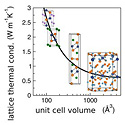 The rich solid-state chemistry of Zintl phases enables a directed search and optimization of new complex thermoelectric materials including the new thermoelectric material Mg₃Sb₂, which is the first material to be competitive with State-of-the-art Bismuth Telluride (Bi₂Te₃) based materials in 60 years.
The rich solid-state chemistry of Zintl phases enables a directed search and optimization of new complex thermoelectric materials including the new thermoelectric material Mg₃Sb₂, which is the first material to be competitive with State-of-the-art Bismuth Telluride (Bi₂Te₃) based materials in 60 years.

Thermal Conductivity due to Dislocations and Grain Boundaries
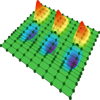 Exceptionally low thermal conductivity good Peltier cooling performance was found in Bi₂Te₃-Sb₂Te₃ alloys hot pressed with liquid Te. The reduced thermal conductivity with only a small reduction in electron mobility can be explained by low energy grain boundaries consisting of dislocation arrays.
Exceptionally low thermal conductivity good Peltier cooling performance was found in Bi₂Te₃-Sb₂Te₃ alloys hot pressed with liquid Te. The reduced thermal conductivity with only a small reduction in electron mobility can be explained by low energy grain boundaries consisting of dislocation arrays.

Charge Transport Model for Complex Conductors: Conducting Polymers, Correlated Electron Oxides and Grain Boundaries
 A two parameter mathematical model that can explain the experimentally observed relationship between thermopower (Seebeck coefficient) and electrical conductivity can identify the charge transport mechanism. For example itinerant band conduction in SrTiO₃ or hopping, narrow band conduction in CeO₂. Thermally activated conductivity in polycrystalline materials may arise from grain boundary polarization effects. The model clearly identifies a different mechanism for conducting polymers, that may be an indication of percolation transport between conducting ordered regions (figure).
A two parameter mathematical model that can explain the experimentally observed relationship between thermopower (Seebeck coefficient) and electrical conductivity can identify the charge transport mechanism. For example itinerant band conduction in SrTiO₃ or hopping, narrow band conduction in CeO₂. Thermally activated conductivity in polycrystalline materials may arise from grain boundary polarization effects. The model clearly identifies a different mechanism for conducting polymers, that may be an indication of percolation transport between conducting ordered regions (figure).

Liquid-Like Thermoelectric Materials
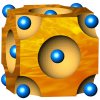 Because a liquid does not propagate shear vibrations the thermal conductivity can be less than that of a solid. Using the liquid-like behaviour of superionic conductors and related highly disordered materials extends the phonon-glass electron-crystal concept for the search for new thermoelectrics.
Because a liquid does not propagate shear vibrations the thermal conductivity can be less than that of a solid. Using the liquid-like behaviour of superionic conductors and related highly disordered materials extends the phonon-glass electron-crystal concept for the search for new thermoelectrics.

Electronic Materials Physics for Energy Devices: Triboelectric, Piezoresistance and Flexible Thermoelectric Materials.
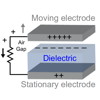 Triboelectrics When different materials are rubbed together there is a transfer of static electric charge known as Triboelectricity. Because of the charge separation and movement large voltages are produced, enough to cause sparking (static electricity discharge). The power produced from such Triboelectric Generatoris comes not from the rubbing but from the movement of electric charges from electric induction, resulting in direct conversion of mechanical energy to electrical energy.
Triboelectrics When different materials are rubbed together there is a transfer of static electric charge known as Triboelectricity. Because of the charge separation and movement large voltages are produced, enough to cause sparking (static electricity discharge). The power produced from such Triboelectric Generatoris comes not from the rubbing but from the movement of electric charges from electric induction, resulting in direct conversion of mechanical energy to electrical energy.

Band Structure Engineering Thermoelectrics
 Alloys of PbTe and Bi₂Te₃ have been used to generate electricity from heat on NASA space missions for 50 years and now are being considered for use on Earth for automotive waste heat recovery. Our group has recently demonstrated that the zT of PbTe and PbSe alloys can be tuned to be much better than previously thought possible due, in part, to the exceptionally high valley degeneracy.
Alloys of PbTe and Bi₂Te₃ have been used to generate electricity from heat on NASA space missions for 50 years and now are being considered for use on Earth for automotive waste heat recovery. Our group has recently demonstrated that the zT of PbTe and PbSe alloys can be tuned to be much better than previously thought possible due, in part, to the exceptionally high valley degeneracy.

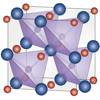 Half Heusler
Half Heusler
Many Half Heusler compunds are semiconductors despite their seemingly intermetallic constituants. This can be rationalized using Zintl chemistry, to show that Half Heusler thermoelectris are based on valence balenced semicondutors. These Zintl chemistry principels can be used then to understand p- and n-type doping as well as defects such as the role of Nb-vacancies in Nb0.8+xCoSb. It also explains that interstitial Ni easily forms in (Ti,Zr)Ni1+xSn adding filled electronic states in the band gap.



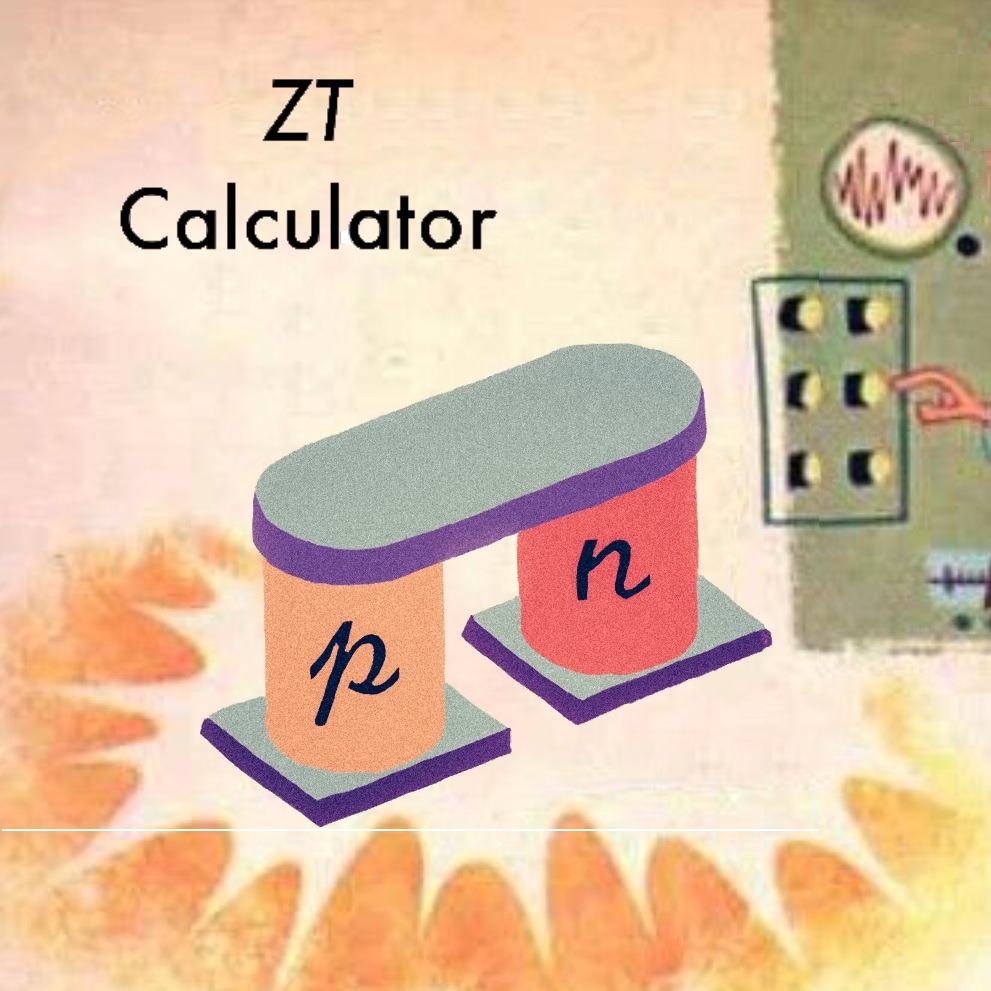

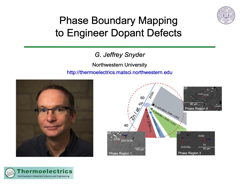
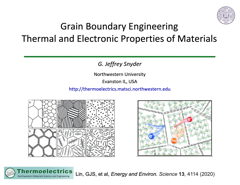
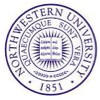
 Eleonora Isotta wins ITS Postdoc Award 2024
Eleonora Isotta wins ITS Postdoc Award 2024 Michael Toriyama wins ITS Graduate Student Award 2024
Michael Toriyama wins ITS Graduate Student Award 2024 Jeff Snyder wins ITS Outstanding Achievement and Humboldt Awards 2024
Jeff Snyder wins ITS Outstanding Achievement and Humboldt Awards 2024 Leah Borgsmiller wins Best Presentation Award at MRS Fall 2022
Leah Borgsmiller wins Best Presentation Award at MRS Fall 2022 Perseverance Rover Powered by Thermoelectrics Lands on Mars
Perseverance Rover Powered by Thermoelectrics Lands on Mars Kazuki Imasato wins
Kazuki Imasato wins  Matthias Agne wins
Matthias Agne wins  Riley Hanus wins
Riley Hanus wins  Stephen Kang wins
Stephen Kang wins  Yinglu Tang wins
Yinglu Tang wins  Sabah Bux (JPL) wins
Sabah Bux (JPL) wins  Heng Wang wins
Heng Wang wins 
 Yanzhong Pei wins
Yanzhong Pei wins  The rich solid-state chemistry of Zintl phases enables a directed search and optimization of new complex thermoelectric materials including the new thermoelectric material Mg₃Sb₂, which is the first material to be competitive with State-of-the-art Bismuth Telluride (Bi₂Te₃) based materials in 60 years.
The rich solid-state chemistry of Zintl phases enables a directed search and optimization of new complex thermoelectric materials including the new thermoelectric material Mg₃Sb₂, which is the first material to be competitive with State-of-the-art Bismuth Telluride (Bi₂Te₃) based materials in 60 years. 
 A two parameter mathematical model that can explain the experimentally observed relationship between thermopower (Seebeck coefficient) and electrical conductivity can identify the charge transport mechanism. For example itinerant band conduction in SrTiO₃ or hopping, narrow band conduction in CeO₂. Thermally activated conductivity in polycrystalline materials may arise from grain boundary polarization effects. The model clearly identifies a different mechanism for conducting polymers, that may be an indication of percolation transport between conducting ordered regions (figure).
A two parameter mathematical model that can explain the experimentally observed relationship between thermopower (Seebeck coefficient) and electrical conductivity can identify the charge transport mechanism. For example itinerant band conduction in SrTiO₃ or hopping, narrow band conduction in CeO₂. Thermally activated conductivity in polycrystalline materials may arise from grain boundary polarization effects. The model clearly identifies a different mechanism for conducting polymers, that may be an indication of percolation transport between conducting ordered regions (figure).

 Triboelectrics When different materials are rubbed together there is a transfer of static electric charge known as Triboelectricity. Because of the charge separation and movement large voltages are produced, enough to cause sparking (static electricity discharge). The power produced from such Triboelectric Generatoris comes not from the rubbing but from the movement of electric charges from electric induction, resulting in direct conversion of mechanical energy to electrical energy.
Triboelectrics When different materials are rubbed together there is a transfer of static electric charge known as Triboelectricity. Because of the charge separation and movement large voltages are produced, enough to cause sparking (static electricity discharge). The power produced from such Triboelectric Generatoris comes not from the rubbing but from the movement of electric charges from electric induction, resulting in direct conversion of mechanical energy to electrical energy.
 Alloys of PbTe and Bi₂Te₃ have been used to generate electricity from heat on NASA space missions for 50 years and now are being considered for use on Earth for automotive waste heat recovery. Our group has recently demonstrated that the zT of PbTe and PbSe alloys can be tuned to be much better than previously thought possible due, in part, to the exceptionally high valley degeneracy.
Alloys of PbTe and Bi₂Te₃ have been used to generate electricity from heat on NASA space missions for 50 years and now are being considered for use on Earth for automotive waste heat recovery. Our group has recently demonstrated that the zT of PbTe and PbSe alloys can be tuned to be much better than previously thought possible due, in part, to the exceptionally high valley degeneracy. 
